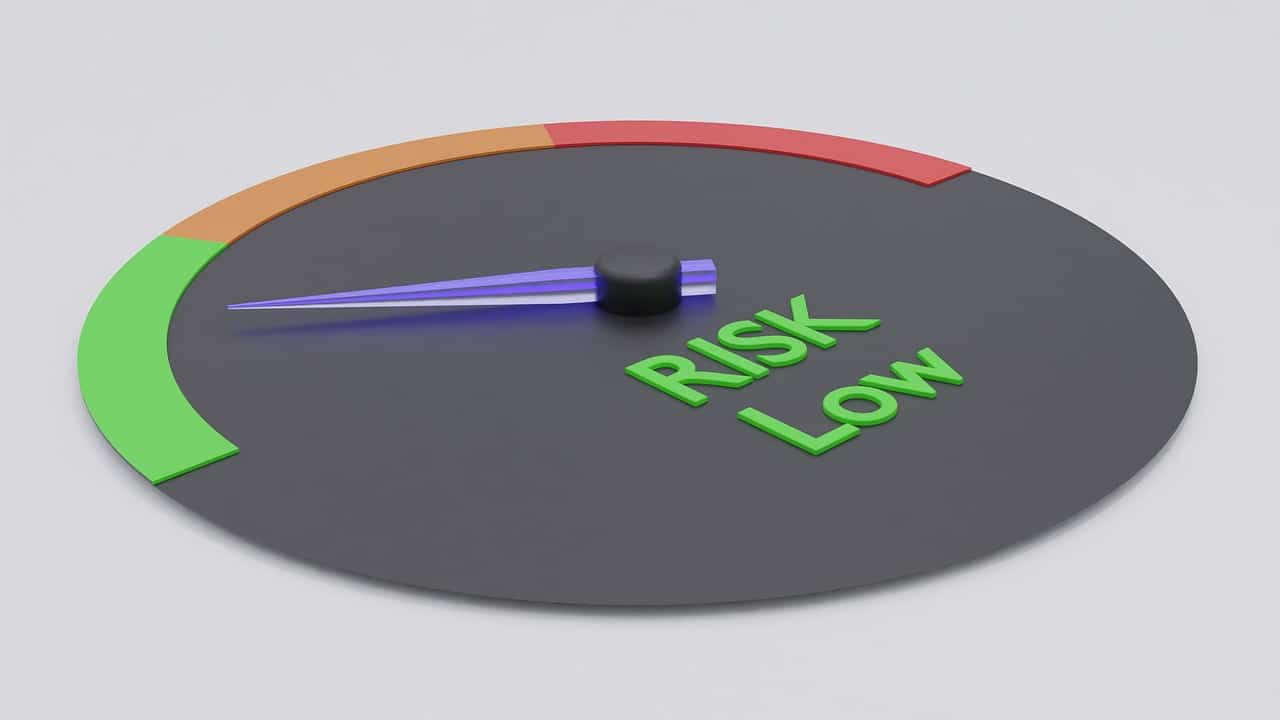Almost every organization relies on external teams to thrive and carve a competitive edge. Unfortunately, 73% of companies have experienced at least one significant disruption caused by a third-party vendor. Substandard deliveries, inflated costs, poor-quality supplies, failure to secure your company’s sensitive data — without a vendor risk management policy and a strong vendor risk management program, it’s easy to be caught up in endless third-party management chaos.
What is a Vendor Risk Management Policy?
A vendor risk management policy, or vendor management policy (VMP), is a formal framework that defines how your organization assesses the risk profiles of third-party products and their capacity to deliver. It guides how you vet vendors before a business relationship begins and throughout the contract term as part of your ongoing monitoring process.
Typically, a VMP is a benchmark for:
- Identifying key risks across vendors
- Establishing vendor management controls that mitigate possible risks
- Overseeing compliance with frameworks like SOC 2, HITRUST and HIPAA
- Standardizing vendor onboarding and evidence collection for evaluation processes
- Managing contract renewal and termination
Remember to tailor your VMP to meet the company’s specific needs. In healthcare, for example, your policy should outline data handling and storage protocols to comply with HIPAA.
Why You Need a Vendor Risk Management Policy
While businesses often understand internal security risks, third-party risks can be less obvious. A VMP outlines the standard operating procedure for vendor management, so every stakeholder involved in vendor relationships can reference it and understand the process. Besides, it:
Promotes Compliance and Data Security Management
Your vendor management policy outlines compliance and security standards that staff and vendors must follow. When every stakeholder understands the expected standards, collaboration toward compliance and security becomes easier.
Reduces Third-Party Risks
A VMP helps with third-party risk management. It establishes clear rules for the vendor’s operations, security, compliance and performance.
With clear expectations and adherence tracking, your VMP reduces third-party risks to maintain reliable vendor relationships.
Maintains Business Continuity
A VMP establishes contingency plans to mitigate disruptions. It identifies critical vendors and outlines backup procedures, so your business can continue smoothly even when a vendor faces operational setbacks.
Enables Data-Backed Decision-Making
As a central repository for vendor information, a VMP helps staff analyze performance and extract valuable insights to inform decisions, such as renewing or terminating vendor contracts.
How to Create a Vendor Risk Management Policy
There’s no one-size-fits-all approach to creating a VMP. Each organization’s needs and vendor ecosystems are unique. However, planning upfront leads to a comprehensive policy and fewer mistakes during vendor onboarding and third-party risk management.
Step 1: Gather the Right Internal Team
Assemble all stakeholders involved in vendor management to collect diverse organizational viewpoints:
- Relationship owners
- A legal representative
- An IT team member
- Members of senior management
- Internal auditors
Provide each member with targeted, role-specific training. For instance, your IT expert should understand what access permissions to assign to members of the vendor management team.
Step 2: Identify Vendor Types and Criticality
With the help of your team, list all vendors and categorize them based on their offerings and the importance of their services to your operations.
Step 3: Assess Vendor Risk
Evaluate vendor risk using factors like:
- Vendor access to proprietary data or personally identifiable information (PII) of employees or customers
- A vendor’s financial and tax information
- A vendor’s geographic data
- A vendor’s political and reputational standing
- A vendor’s cybersecurity capacity
- A vendor’s operational capacity
- Length and type of engagement
Assign a score to each identified risk. Most organizations grade a vendor’s risk profile as high, medium or low.
Step 4: Define Compliance and Security Standards
Establish rules and expectations for your vendors, from operational procedures and data protection to compliance adherence and performance benchmarks.
Step 5: Create a Vendor Onboarding and Monitoring Plan
Define the process for onboarding and integrating vendors into your operations. From a cybersecurity perspective, you should have a third-party risk assessment checklist to evaluate vendors’ security posture and verify they meet your organization’s standards. You can simplify onboarding with a dedicated onboarding team.
After onboarding, define how you’ll monitor vendors through regular reviews and reports to maintain accountability while reducing risk exposure.
Step 6: Outline Contingency and Continuity Plans
Identifying backup vendors and alternate workflows to prepare for potential disruptions. Highlight the emergency procedures to maintain business continuity.
Step 7: Document Roles and Responsibilities
Clarify which employees are responsible for each vendor management process. This way, everyone understands their duties and stays accountable.
Step 8: Schedule VMP Reviews and Updates
Periodically review your vendor risk management policy to account for changes in vendor operations and business needs. Update procedures and standards to meet evolving regulatory requirements.
What should you include in your vendor risk management policy?
While the content of your VMP largely depends on your organizational needs, some key components are standard across organizations.
| VMP component | Overview |
| Vendor compliance standards | Regulatory frameworks and internal policies that vendors must adhere to when working with your organization |
| Service level agreements (SLAs) | Measurable standard for service delivery and penalties for non-compliance |
| Acceptable vendor controls | Controls vendors must maintain to reduce risks |
| Vendor liabilities in case of a data breach | Vendor’s legal and financial responsibilities in the event of a data breach |
| Ongoing monitoring and management | Procedures for tracking vendor performance and ensuring continuous compliance |
| Offboarding procedures | The process for securely ending a vendor relationship |
Best Practices for Assessing New Vendors
Experience will sharpen your vendor management expertise. However, if you’re looking to start strong, some best practices will help you make better vendor decisions from the outset:
- Prioritize vendors with the potential to scale, as they can grow with your business and meet future demand, ensuring long-term continuity.
- Shop around and test vendors to evaluate service or product quality before signing a contract.
- Consider vendors with reliable after-sales support, so your staff can use the product or service effectively from Day One.
- Research the vendor’s reputation to verify reliability and avoid partners with a history of poor performance.
- Prioritize local vendors to simplify communication, speed support and allow in-person training when needed.
Three Levels of Vendor Relationship Management
As you finalize your vendor risk management policy, establish a system for reviewing vendor performance to achieve and maintain operational excellence. Depending on your organization’s objectives, you can review your vendor relationships at three levels:
Level 1: Ongoing Operational Review
Continuous operational review involves day-to-day assessment to verify that vendors consistently meet your service-level agreements and performance indicators. This level of management ensures you address small issues early before they escalate into costly disruptions. An ongoing operational review is suitable if a vendor plays a critical role in your operations, where even a brief disruption can impact business continuity.
Level 2: Annual Relationship Review
You can step back from reviewing daily operations to evaluating the overall quality of the partnership. An annual review is suitable for vendors with long-term contracts and strategic importance to your business. It helps you assess mutual satisfaction and confirm alignment with organizational goals.
Level 3: Cyclical Contract and Return on Investment (ROI) Review
Conduct cyclical contract and ROI review during contract renewal cycles to evaluate the actual ROI your vendor relationship delivers over the set period. Reserve this level of management for major or high-value vendors whose impact spans multiple years.
Automate Vendor Relationship Management with Onspring
As one of the top GRC software solutions, Onspring simplifies the vendor risk management framework, so you can focus more on building stronger, more reliable partnerships. With our tool, you can:
- Automate workflow to eliminate manual bottlenecks
- Centralize vendor data to improve visibility and decision-making processes across departments
- Schedule reviews to maintain compliance and ensure consistent vendor performance
- Monitor vendor metrics in real time to identify risks early before they escalate
- Track and resolve vendor issues efficiently to protect operations and vendor relationships
Schedule a demo today to learn how Onspring can help you create a comprehensive vendor risk management policy.





